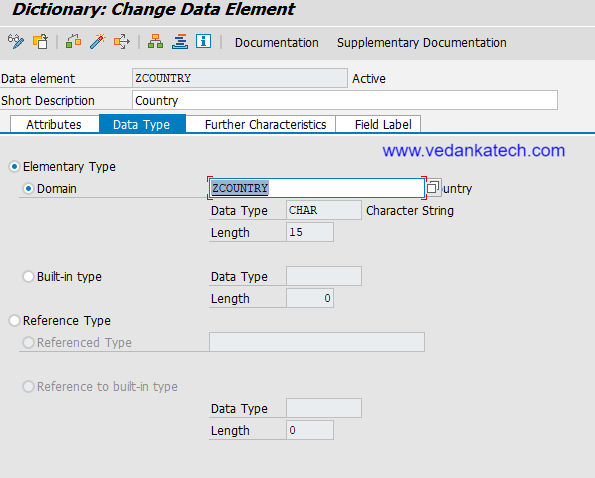- SAP ABAP
- What is SAP ABAP
- SAP ABAP Data Dictionary and Domain
- SAP ABAP Data Element
- SAP ABAP Database Table
- SAP ABAP Database tables and views
- SAP ABAP Foreign Key
- SAP ABAP Indexes
- SAP ABAP Structure
- SAP ABAP Package
- SAP ABAP Adding Fields to SAP Standard Table
- SAP ABAP Internal Table and Database Table
- SAP ABAP Select Option and Parameter
- SAP ABAP Types of Internal Table
- SAP ABAP ways of Declaring Internal Tables
- SAP ABAP Mastering Initialization Technique
- SAP ABAP Operations on Internal Table
- SAP ABAP Record Retrieval
- SAP ABAP Insert, Modify and Delete data in the Internal table by using Keywords
- SAP ABAP Sorting and Removing Adjacent Duplicates
- SAP ABAP Seamless Data Transfer Between Internal Tables
- SAP ABAP Search Help Types
- SAP ABAP Lock Objects and Types
- SAP ABAP Buffering and Its Types
- SAP ABAP TMG
- SAP ABAP Table Types
- SAP ABAP Views
- SAP ABAP Control Break Statement
- SAP ABAP COMMIT and ROLLBACK
- SAP ABAP Joins
- SAP For All Entries
- SAP ABAP Procedure to Fill Final Internal Table
- SAP ABAP Modularization
- SAP ABAP Function Group and Function Module
- SAP ABAP SELECT Options
24DDIC1107 – Understanding SAP ABAP Data Element Use and Steps to Create it
SAP ABAP Data Element Use
In SAP ABAP (Advanced Business Application Programming), a data element defines the semantic attributes of a table field or structure component, providing a meaningful description and ensuring consistency across the SAP system. It ties together the technical properties from a domain (such as data type and length) with field-specific information like field labels and documentation. This modular approach facilitates reuse and maintenance of data definitions, ensuring that the same data element can be applied uniformly across multiple tables and programs.
Steps to Create an SAP ABAP Data Element
- Access the ABAP Dictionary
Transaction Code: Enter transaction code SE11 in the SAP command field to open the ABAP Dictionary.

Select Data Element: On the initial screen, choose the “Data Type” option.

- Define the Data Element Name
Naming Convention: Enter a unique name for the data element, following your organization’s naming standards and Click on create.

Description: Provide a short description that explains the purpose of the data element.

- Assign a Domain
Domain Name: Enter the name of an existing domain that defines the technical properties (data type, length, value range) for the data element.

- Define Field Labels
Short, Medium and Long Labels: Provide field labels in different lengths to describe the data element in various contexts.
Heading: Specify a heading label for use in reports and screens.

- Assign a Package Save the data to the local object or Transportable workbench request

- Save and Activate the Data Element
Save: Save the data element definition by clicking the “Save” button.
Check: Use the “Check” button to validate the data element definition and ensure there are no errors.
Activate: Activate the data element to make it available for use in table fields and structures. This step compiles the data element definition and registers it in the SAP system.

By following these steps, you can create robust and reusable data elements in SAP ABAP, which help in maintaining data consistency and improving the overall manageability of the SAP system.
Author : Aniket Pawar, 9373518385
24DDIC1107 – Understanding SAP ABAP Data Element Use and Steps to Create it
SAP ABAP Data Element Use
In SAP ABAP (Advanced Business Application Programming), a data element defines the semantic attributes of a table field or structure component, providing a meaningful description and ensuring consistency across the SAP system. It ties together the technical properties from a domain (such as data type and length) with field-specific information like field labels and documentation. This modular approach facilitates reuse and maintenance of data definitions, ensuring that the same data element can be applied uniformly across multiple tables and programs.
Steps to Create an SAP ABAP Data Element
- Access the ABAP Dictionary
Transaction Code: Enter transaction code SE11 in the SAP command field to open the ABAP Dictionary.

Select Data Element: On the initial screen, choose the “Data Type” option.

- Define the Data Element Name
Naming Convention: Enter a unique name for the data element, following your organization’s naming standards and Click on create.

Description: Provide a short description that explains the purpose of the data element.

- Assign a Domain
Domain Name: Enter the name of an existing domain that defines the technical properties (data type, length, value range) for the data element.

- Define Field Labels
Short, Medium and Long Labels: Provide field labels in different lengths to describe the data element in various contexts.
Heading: Specify a heading label for use in reports and screens.

- Assign a Package Save the data to the local object or Transportable workbench request

- Save and Activate the Data Element
Save: Save the data element definition by clicking the “Save” button.
Check: Use the “Check” button to validate the data element definition and ensure there are no errors.
Activate: Activate the data element to make it available for use in table fields and structures. This step compiles the data element definition and registers it in the SAP system.

By following these steps, you can create robust and reusable data elements in SAP ABAP, which help in maintaining data consistency and improving the overall manageability of the SAP system.
Author : Aniket Pawar, 9373518385

